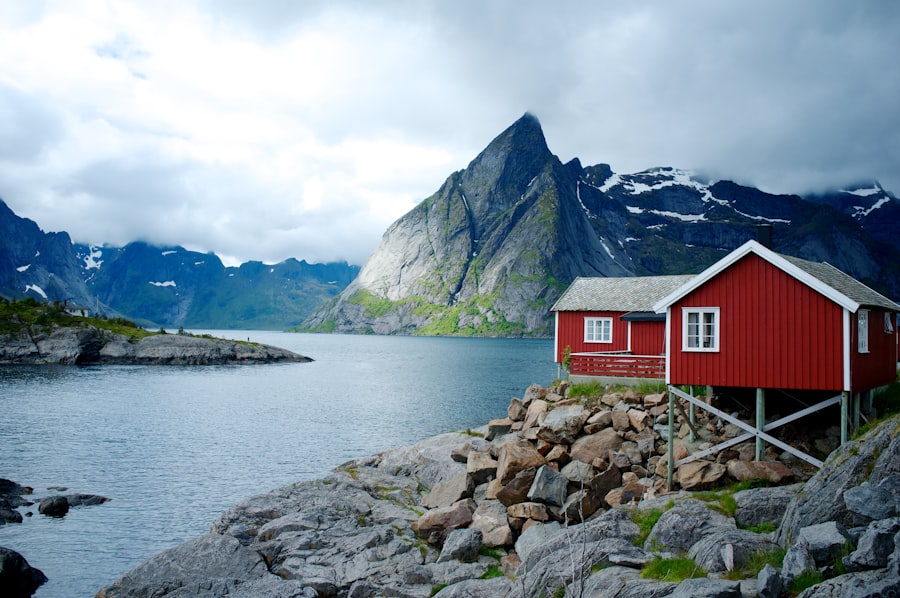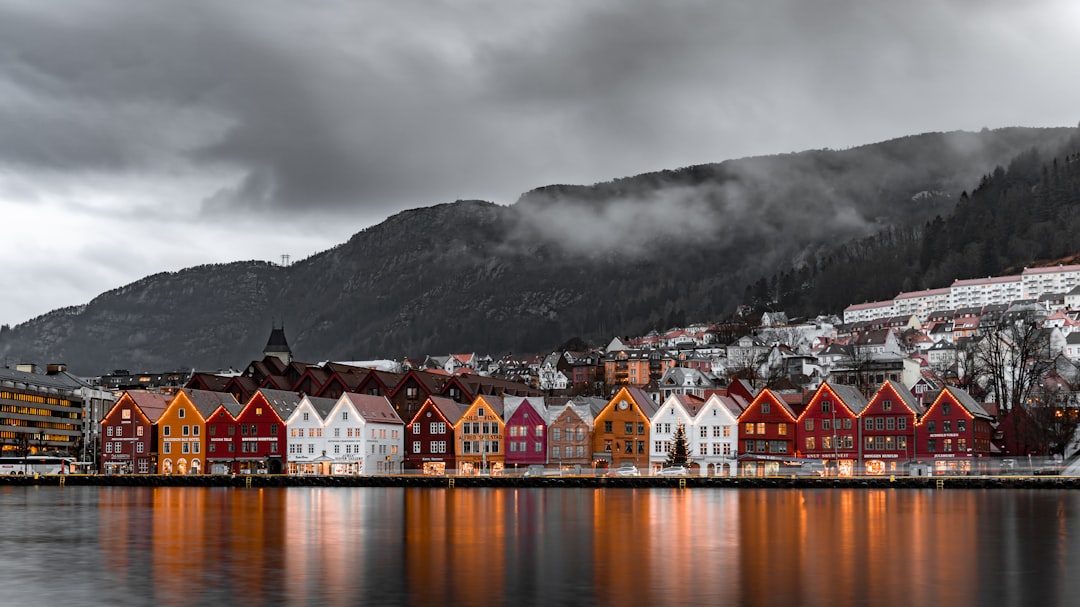In Norway, cycling is not merely a mode of transport; it is a cherished part of the culture and lifestyle. With its stunning landscapes and extensive network of cycling paths, the country encourages both locals and tourists to explore its beauty on two wheels. However, the importance of wearing a helmet while cycling cannot be overstated.
Helmets serve as a crucial line of defence against head injuries, which can occur even in minor accidents. Given the unpredictable nature of road conditions and the potential for collisions with vehicles or pedestrians, wearing a helmet is an essential safety measure that every cyclist should adopt. Moreover, the Norwegian climate can present unique challenges for cyclists.
Rain, snow, and icy conditions can make cycling hazardous, increasing the likelihood of falls and accidents. A helmet provides not only physical protection but also peace of mind, allowing cyclists to navigate these conditions with greater confidence. In a country that values outdoor activities and promotes an active lifestyle, prioritising safety through helmet use is vital for ensuring that cycling remains an enjoyable and safe pursuit for everyone. Book your 1-hour strategy session with Norway Relocation Group.
Summary
- Wearing a helmet while cycling in Norway is crucial for personal safety and is strongly encouraged by authorities.
- In Norway, cyclists are required by law to wear a helmet when riding, with strict penalties for non-compliance.
- Helmets for cyclists in Norway must meet specific safety standards and be securely fastened to the head.
- Not wearing a helmet while cycling in Norway can result in fines and points on the offender’s driving license.
- Despite a generally positive attitude towards helmet use, there are still some cultural attitudes that may discourage its use in Norway.
Cycling Laws and Regulations in Norway
Norway has established a comprehensive set of laws and regulations governing cycling to ensure the safety of all road users. These laws are designed to create a harmonious environment where cyclists can coexist with motorists and pedestrians. For instance, cyclists are required to adhere to traffic signals and signs, just like any other vehicle on the road.
This includes stopping at red lights and yielding to pedestrians at crosswalks. Such regulations are crucial in maintaining order on the roads and reducing the risk of accidents. In addition to general traffic laws, Norway has specific regulations that pertain to cycling equipment and safety gear.
These laws are aimed at promoting safe cycling practices and reducing the incidence of injuries. Cyclists are encouraged to use lights and reflectors during low visibility conditions, ensuring they are seen by other road users. Furthermore, local authorities often implement additional measures, such as dedicated bike lanes and traffic calming initiatives, to enhance cyclist safety.
Understanding these laws is essential for anyone looking to cycle in Norway, as compliance not only ensures personal safety but also contributes to a culture of respect among all road users.
Helmet Requirements for Cyclists in Norway

While wearing a helmet is not legally mandated for all cyclists in Norway, it is highly recommended by health authorities and cycling organisations. The Norwegian government has made significant efforts to promote helmet use among children and young adults, recognising that early adoption of safety practices can lead to lifelong habits. In fact, many municipalities have implemented initiatives that encourage helmet use through educational campaigns and community events.
For children under the age of 15, wearing a helmet while cycling is compulsory in certain regions, reflecting the government’s commitment to safeguarding younger cyclists. This requirement underscores the importance of instilling safe cycling habits from an early age. Parents are encouraged to lead by example, wearing helmets themselves while cycling with their children.
By fostering a culture of safety, Norway aims to reduce the number of cycling-related injuries and fatalities, particularly among its younger population.
Penalties for Not Wearing a Helmet in Norway
As previously mentioned, while there is no nationwide law mandating helmet use for all cyclists, there are penalties in place for those who fail to comply with local regulations regarding children. In areas where helmet use is compulsory for minors, parents or guardians may face fines if their child is caught cycling without a helmet. These penalties serve as a deterrent and highlight the seriousness with which authorities view the issue of cycling safety.
In addition to legal repercussions, there are also social consequences associated with not wearing a helmet. Cyclists who choose to ride without proper head protection may face criticism from fellow cyclists and pedestrians alike. This societal pressure can encourage individuals to adopt safer practices, as the community collectively advocates for responsible cycling behaviour.
Ultimately, while penalties may vary by region, the overarching goal remains the same: to promote safety and reduce the risk of injury among cyclists.
Cultural Attitudes Towards Helmet Use in Norway
Cultural attitudes towards helmet use in Norway are evolving, with an increasing number of cyclists recognising the importance of wearing helmets as part of their cycling routine. Historically, there may have been some resistance to helmet use among certain segments of the population, with perceptions that helmets were cumbersome or unnecessary. However, as awareness of cycling safety has grown, so too has the acceptance of helmets as an integral part of cycling attire.
Norwegians take pride in their outdoor lifestyle, and this extends to their approach to cycling. Many view wearing a helmet as a responsible choice that reflects a commitment to personal safety and well-being. Additionally, community initiatives aimed at promoting helmet use have contributed to changing perceptions.
Events such as “Helmet Day” or local cycling festivals often include educational components that highlight the benefits of helmets, further embedding this practice into the cultural fabric of Norwegian cycling.
Tips for Choosing the Right Helmet for Cycling in Norway

Selecting the right helmet is crucial for ensuring maximum protection while cycling in Norway’s diverse conditions. When choosing a helmet, it is essential to consider factors such as fit, comfort, and safety standards. A well-fitting helmet should sit snugly on the head without being overly tight or uncomfortable.
It should also have adjustable straps to ensure it remains securely in place during rides. In addition to fit, cyclists should look for helmets that meet recognised safety standards. In Norway, helmets must comply with European safety regulations (EN 1078), which ensure they provide adequate protection against impact.
Furthermore, cyclists may want to consider helmets with additional features such as ventilation systems for warmer days or visors for sun protection. Ultimately, investing time in selecting the right helmet can significantly enhance both comfort and safety while cycling.
How to Properly Fit and Adjust a Helmet for Cycling in Norway
Properly fitting and adjusting a helmet is essential for maximising its protective capabilities. To achieve the best fit, cyclists should start by placing the helmet level on their head, ensuring it covers the forehead without obstructing vision. The front edge should sit about two finger-widths above the eyebrows.
Once positioned correctly, it is important to adjust the straps so that they form a “V” shape just below the ears when buckled. After securing the straps, cyclists should perform a simple test to ensure the helmet fits snugly. By gently shaking their head from side to side and up and down, they should feel minimal movement between their head and the helmet.
If there is excessive movement or discomfort, further adjustments may be necessary. Taking the time to ensure a proper fit not only enhances safety but also makes for a more enjoyable cycling experience.
Understanding the Benefits of Wearing a Helmet While Cycling in Norway
The benefits of wearing a helmet while cycling in Norway extend beyond mere compliance with regulations; they encompass physical safety and psychological reassurance. Helmets are designed to absorb impact energy during accidents, significantly reducing the risk of severe head injuries such as concussions or skull fractures. This protective measure is particularly important given Norway’s varied terrain and weather conditions that can lead to unexpected falls or collisions.
Beyond physical protection, wearing a helmet can also foster a sense of confidence among cyclists. Knowing that they are taking proactive steps to safeguard their well-being allows individuals to enjoy their rides more fully. This psychological aspect cannot be overlooked; when cyclists feel secure in their safety measures, they are more likely to engage in regular cycling activities, contributing positively to their overall health and well-being.
Promoting Helmet Use and Safety Awareness in Norway
Promoting helmet use and safety awareness is crucial for fostering a culture of responsible cycling in Norway. Various organisations and local authorities have taken proactive steps to raise awareness about the importance of helmets through educational campaigns and community outreach initiatives. These efforts often include workshops, school programmes, and public events aimed at informing both new and experienced cyclists about safe riding practices.
Additionally, social media platforms have become powerful tools for spreading awareness about helmet use. Campaigns featuring testimonials from cyclists who have experienced accidents while not wearing helmets serve as poignant reminders of the potential consequences of neglecting this vital safety measure. By leveraging both traditional and digital media channels, advocates can effectively reach diverse audiences and encourage widespread adoption of helmet use across all age groups.
Common Misconceptions about Helmet Use in Norway
Despite growing awareness about the importance of wearing helmets while cycling, several misconceptions persist within society. One common belief is that helmets are only necessary for inexperienced or young cyclists; however, this notion overlooks the fact that accidents can happen to anyone regardless of skill level or experience. In reality, even seasoned cyclists can benefit from wearing helmets as they navigate unpredictable road conditions or encounter unforeseen obstacles.
Another misconception is that helmets can cause discomfort or hinder performance during rides. While it is true that poorly fitted helmets may be uncomfortable, modern designs prioritise comfort without compromising safety. Many helmets now feature lightweight materials and advanced ventilation systems that enhance airflow while maintaining structural integrity.
By dispelling these myths through education and advocacy efforts, communities can encourage more individuals to embrace helmet use as an essential aspect of safe cycling.
Resources for Cyclists to Learn More about Helmet Use in Norway
For those seeking further information about helmet use in Norway, numerous resources are available to help educate cyclists on best practices and safety measures. The Norwegian Cyclists’ Association (Norsk Cyklistforbund) offers valuable insights into cycling laws, safety tips, and recommendations for choosing appropriate gear including helmets. Their website features articles and guides tailored specifically for both novice and experienced cyclists.
Additionally, local municipalities often provide resources aimed at promoting safe cycling practices within their communities. These may include workshops on proper helmet fitting or informational pamphlets distributed at bike shops or community centres. Online platforms such as social media groups dedicated to cycling enthusiasts also serve as excellent forums for sharing experiences and advice related to helmet use and overall cycling safety in Norway.
In conclusion, while cycling remains an integral part of Norwegian culture, prioritising safety through helmet use is paramount for ensuring enjoyable experiences on two wheels. The combination of understanding laws and regulations surrounding cycling, promoting awareness about helmet benefits, dispelling misconceptions, and utilising available resources will contribute significantly towards fostering a safer environment for all cyclists in Norway. As more individuals embrace these practices, it will undoubtedly lead to a healthier population engaged in one of nature’s most rewarding activities—cycling through Norway’s breathtaking landscapes while prioritising their own safety with every ride.
For those looking to improve their Norwegian language skills while exploring these topics further or engaging with local communities around cycling safety initiatives, consider enrolling in one of the Norwegian courses offered at NLS Norwegian Language School in Oslo.
With tailored programmes designed for various proficiency levels, NLS provides an excellent opportunity not only to learn the language but also to immerse oneself in Norwegian culture—making your cycling adventures even more enriching!
Speak Norwegian with confidence. Enroll in a class at the NLS Norwegian Language School now.

